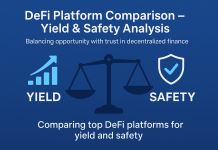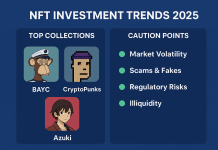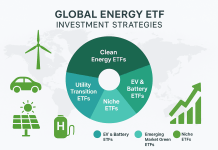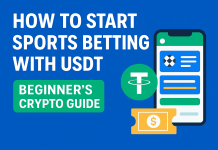
Why Tether Matters in 2025
In 2025, the cryptocurrency world is thriving with innovation, and stablecoins like Tether (USDT) are at the center of it all. For millions of investors, traders, and businesses, USDT serves as a bridge between digital assets and traditional finance. With over $100 billion in circulation, it’s the most widely used stablecoin on the planet.
But the key question remains: Is USDT a safe stablecoin to invest in during 2025?
This article dives deep into USDT’s trustworthiness, its role in modern finance, and whether it can continue being a reliable store of value.
What is Tether (USDT)?
Tether (USDT) is a stablecoin — a cryptocurrency pegged to the U.S. dollar. Each token aims to maintain a 1:1 value ratio with USD. This makes USDT different from volatile cryptocurrencies like Bitcoin or Ethereum.
Launched in 2014, Tether quickly became the go-to stablecoin due to:
- Liquidity: Accepted on almost every exchange worldwide.
- Stability: Designed to minimize price fluctuations.
- Utility: Widely used for trading, payments, and remittances.
Why Investors Choose USDT in 2025
- Reliability in Volatile Markets – USDT offers stability when crypto markets swing wildly.
- Global Accessibility – Easy to transfer across borders, avoiding traditional banking delays.
- Liquidity & Speed – Fast transactions make it ideal for both small and large transfers.
- DeFi & Trading – USDT powers decentralized finance protocols and crypto trading pairs.
In short, USDT is not just a digital dollar; it’s a gateway to opportunity in the crypto ecosystem.
Is USDT Truly Backed?
A major concern for years has been whether Tether holds enough reserves to back every USDT in circulation.
- Tether’s Response: The company now publishes attestation reports from independent auditors to confirm reserves.
- Current Reserves (2025): Tether reports that most holdings are in U.S. Treasury bills, cash, and highly liquid assets, with surplus reserves as an extra safety cushion.
- Transparency Progress: While not perfect, transparency has improved significantly since 2021, increasing investor confidence.
Industry experts generally agree that Tether has matured into a far more accountable stablecoin issuer.
USDT vs. Other Stablecoins
FeatureUSDT (Tether)USDC (Circle)DAI (MakerDAO)Market ShareLargestSecond largestSmaller, decentralizedBackingFiat reservesFiat reservesCrypto collateralTransparencyImproved, monthly attestationsHigh, auditedOn-chain transparencyLiquidityVery highHighModerateRegulationOffshoreU.S.-basedDecentralized
While USDC and DAI offer strong competition, USDT remains dominant due to its unmatched liquidity and acceptance worldwide.
Risks of Investing in USDT
Like any financial tool, USDT comes with risks:
- Regulatory Scrutiny: Governments continue to examine Tether closely.
- Transparency Concerns: While improving, full independent audits are still limited.
- Centralization: Unlike decentralized coins, USDT relies on one company’s management.
However, these risks are balanced by Tether’s global usage and consistent stability over a decade of existence.
Opportunities with USDT in 2025
For investors, businesses, and traders, USDT opens doors to exciting opportunities:
- Cross-Border Payments – Send money globally in minutes.
- E-commerce Adoption – Increasingly accepted as a payment method.
- Trading & Arbitrage – A staple for traders managing volatility.
- DeFi Integration – Used in lending, staking, and yield farming platforms.
- Hedge Against Inflation – In countries with unstable currencies, USDT acts as a lifeline.
Expert Opinions on USDT Safety
- Economists: See stablecoins as essential for digital finance, but stress the need for transparency.
- Crypto Analysts: Recognize Tether’s dominance as a sign of trust from millions of users.
- Financial Institutions: Some remain cautious, but increasing adoption shows USDT’s staying power.
The consensus is clear: while not risk-free, USDT has earned a reputation as a reliable stablecoin in the digital economy.
Future Outlook: What’s Next for USDT?
Looking ahead to 2025 and beyond:
- Regulation: Global rules for stablecoins may actually boost Tether’s credibility.
- Integration: More businesses will adopt USDT for everyday payments.
- Innovation: Tether is expanding beyond USD, offering Euro, Yuan, and Gold-backed tokens.
- Market Growth: With expanding DeFi and Web3, demand for USDT is likely to grow.
For long-term users, this could mean greater confidence and utility in using USDT as part of a balanced investment strategy.
Should You Invest in USDT in 2025?
If your goal is stability, liquidity, and accessibility, USDT remains one of the most reliable options in crypto. While investors seeking high returns may prefer volatile assets, USDT excels at:
- Preserving capital.
- Enabling fast, global transactions.
- Acting as a safe harbor during market downturns.
Frequently Asked Questions (FAQ)
1. Is USDT safe to hold long-term?
Yes, USDT is considered stable, but it’s best used as a transactional tool or short-term store of value rather than a long-term investment.
2. Can USDT lose its peg to the dollar?
While rare, small deviations occur. However, Tether’s reserves and market demand usually restore the peg quickly.
3. How does USDT make money for investors?
Directly, USDT doesn’t earn yield. But investors can use it in DeFi protocols, exchanges, and lending platforms to generate returns.
4. Is USDT better than USDC in 2025?
Both are strong options. USDT dominates liquidity, while USDC offers more U.S.-regulated transparency. Choice depends on user preference.
5. Can USDT be regulated out of existence?
Unlikely. Instead, regulation is expected to formalize stablecoin standards, making USDT safer and more accepted.
Conclusion: Trust in Stability
In 2025, Tether (USDT) remains the most trusted and widely used stablecoin, offering investors peace of mind in a fast-moving crypto landscape. While not risk-free, its global adoption, liquidity, and improving transparency make it a strong choice for anyone seeking digital stability.























